Introduction
Alcohol use disorder (AUD) is a chronic condition characterized by a problematic pattern of alcohol use that causes significant impairment or distress. AUD affects millions of people worldwide and is associated with various health, social, and economic consequences. Addressing AUD is important for improving the quality of life of individuals and families affected by this disorder, as well as reducing the burden on the healthcare system and society.
Causes of Alcohol Use Disorder
There is no single cause of AUD, but rather a complex interplay of genetic, environmental, and psychological factors that influence the risk of developing this disorder. Some of the main factors are:
- Genetic predisposition: People who have a family history of AUD are more likely to develop it themselves, as they may inherit genes that affect the metabolism of alcohol, the sensitivity to its effects, or the reward system in the brain. Additionally, some genetic factors may predispose people to other mental health conditions that co-occur with AUD, such as depression or anxiety.
- Environmental influences: People who are exposed to alcohol at an early age, or who live in a culture or environment that encourages or facilitates heavy drinking, are more likely to develop AUD. Furthermore, people who experience traumatic events, such as abuse, violence, or loss, may use alcohol as a way of coping or escaping from their negative emotions, which can lead to AUD.
- Psychological factors: People who have high levels of stress, low self-esteem, or poor coping skills may use alcohol as a means of relaxation, self-medication, or social enhancement, which can increase the risk of AUD. Moreover, people who suffer from mental health conditions, such as mood disorders, anxiety disorders, or personality disorders, may have a higher prevalence of AUD, as alcohol may worsen or mask their symptoms.
<<Click Here To Get Instant Access>>
Symptoms of Alcohol Use Disorder
The symptoms of AUD can be classified into three categories: physical, behavioral, and psychological. Some of the common symptoms are:
- Physical symptoms: These include developing a tolerance to alcohol, which means needing more alcohol to achieve the same effect, and experiencing withdrawal symptoms, such as nausea, sweating, tremors, or seizures when stopping or reducing alcohol use.
- Behavioral symptoms: These include losing control over the amount or frequency of alcohol use, spending a lot of time obtaining, using, or recovering from alcohol, and continuing to use alcohol despite negative consequences, such as health problems, legal issues, or interpersonal conflicts.
- Psychological symptoms: These include having a strong desire or craving for alcohol, being unable to cut down or control alcohol use, and giving up or reducing important activities or obligations because of alcohol use.
Diagnosis of Alcohol Use Disorder
The diagnosis of AUD is based on the criteria of the Diagnostic and Statistical Manual of Mental Disorders (DSM-5), which is the standard reference for mental health professionals. According to the DSM-5, a person has AUD if they meet at least two out of 11 criteria in the past 12 months. The criteria are:
- Experienced occasions where you consumed alcohol in excess, surpassing your initial intentions or prolonging the duration of drinking.
- More than once, I wanted to cut down or stop drinking, or tried to, but couldn’t.
- We have invested considerable time in alcohol consumption, experiencing illness, or recovering from related aftereffects.
- Craved a drink so intensely that it consumed your thoughts.
- Tracked down that drinking — or being debilitated from drinking — frequently impeded dealing with your home or family, or caused work inconveniences, or school issues.
- Persisting in drinking despite it leads to conflicts or issues within your family or social circle.
- Sacrificed or reduced involvement in activities that held significance, interest, or brought joy, in order to consume alcohol.
- Experienced situations, on more than one occasion, while or after consuming alcohol that elevated the risk of harm, including activities like driving, swimming, operating machinery, walking in hazardous areas, or engaging in unsafe sexual practices.
- Persisted in alcohol consumption despite experiencing feelings of depression or anxiety, exacerbating other health issues, or following a memory blackout.
- Had to consume a significantly larger quantity of alcohol than previously to achieve the desired effect, or noticed that your regular amount of drinks yielded much-diminished effects compared to earlier experiences.
- Tracked down that when the impacts of liquor were wearing off, you had withdrawal side effects, for example, inconvenience dozing, unsteadiness, fretfulness, queasiness, perspiring, a hustling heart, or a seizure, or detected things that were not there.
<<Click Here To Get Instant Access>>
The severity of AUD is graded as mild, moderate, or severe, depending on the number of criteria met. A mild AUD is diagnosed when two or three criteria are met, a moderate AUD when four or five criteria are met, and a severe AUD when six or more criteria are met.
Best Treatment for Alcohol Use Disorder
The treatment of AUD is tailored to the individual’s needs and preferences and may involve a combination of medical, psychological, and social interventions. Some of the main components of treatment are:
- Medical detoxification: This is the process of safely eliminating alcohol from the body, under the supervision of a health care professional, to prevent or manage withdrawal symptoms and complications. Medical detoxification is usually the first step in the treatment of AUD and may involve the use of medications to ease the withdrawal process and reduce the risk of relapse.
- Behavioral therapies: These are psychological interventions that aim to change the thoughts, feelings, and behaviors that contribute to AUD, and to enhance the motivation, skills, and support for recovery. Some of the most effective behavioral therapies for AUD are cognitive-behavioral therapy (CBT) and motivational enhancement therapy (MET). CBT helps people identify and challenge the cognitive distortions and maladaptive coping strategies that lead to alcohol use, and to develop alternative and healthier ways of dealing with stress, negative emotions, and high-risk situations. MET helps people increase their awareness of the pros and cons of their alcohol use, and to strengthen their commitment and readiness for change.
- Medications: These are pharmacological agents that act on the brain and body to reduce the craving for alcohol, the rewarding effects of alcohol, or the aversive effects of alcohol. Some of the most commonly used medications for AUD are disulfiram and naltrexone. Disulfiram works by inhibiting the enzyme that breaks down alcohol, causing unpleasant reactions, such as flushing, nausea, headache, or palpitations, when alcohol is consumed. Naltrexone works by blocking the opioid receptors that mediate the pleasurable effects of alcohol, reducing the desire and satisfaction from drinking.

Prevention of Alcohol Use Disorder
The prevention of AUD is a public health priority that requires a comprehensive and coordinated approach from multiple sectors and stakeholders. Some of the key strategies for preventing AUD are:
- Public health initiatives: These include policies and regulations that aim to reduce the availability, accessibility, affordability, and attractiveness of alcohol, such as setting minimum legal drinking age, limiting alcohol outlet density, enforcing drink-driving laws, increasing alcohol taxes, and restricting alcohol advertising and promotion.
- Education and awareness programs: These include interventions that aim to increase the knowledge and awareness of the general public, especially young people, about the risks and harms of alcohol use, and to promote healthy and responsible attitudes and behaviors towards alcohol, such as setting personal limits, avoiding binge drinking, and seeking help when needed.
- Early intervention and screening: These include activities that aim to identify and assist people who are at risk of developing AUD, or who have already developed AUD, before they experience more severe consequences, and to refer them to appropriate treatment services if needed. Early intervention and screening can be conducted in various settings, such as primary care, schools, workplaces, or community centers, using standardized tools, such as the Alcohol Use Disorders Identification Test (AUDIT).
Coping Strategies for Individuals and Families
The recovery from AUD is a long-term and ongoing process that requires the active involvement and support of individuals and families. Some of the helpful coping strategies for individuals and families are:
<<Click Here To Get Instant Access>>
- Support groups: These are groups of people who share similar experiences and challenges related to AUD, and who provide mutual support, encouragement, and guidance for recovery. Support groups can be based on different philosophies or approaches, such as Alcoholics Anonymous (AA), which is based on the 12-step model of recovery, or SMART Recovery, which is based on the principles of CBT and MET.
- Relapse prevention techniques: These are strategies that help people maintain their abstinence from alcohol, and to cope with the triggers, temptations, and setbacks that may occur during the recovery process. Relapse prevention techniques include self-monitoring, goal-setting, reward systems, coping skills training, contingency management, and relapse analysis.
- Family involvement in treatment: This involves the participation of family members in the assessment, planning, implementation, and evaluation of the treatment of AUD, as well as the provision of family education, counseling, and support. Family involvement in treatment can improve the outcomes and satisfaction of both the individual with AUD and the family members, as well as enhance the family functioning and relationships.
<<Click Here To Learn More About This Product>>
Conclusion
Alcohol use disorder (AUD) is a serious and complex condition that affects many aspects of a person’s life, such as their health, relationships, work, and well-being. AUD is caused by a combination of genetic, environmental, and psychological factors, and manifests as physical, behavioral, and psychological symptoms. AUD can be diagnosed using the DSM-5 criteria, and treated using a variety of medical, psychological, and social interventions. However, the recovery from AUD is not easy, and requires the active involvement and support of individuals and families. Therefore, it is important to seek treatment as soon as possible, and to adopt a holistic approach to recovery that addresses not only the alcohol use, but also the underlying causes and consequences of AUD. By doing so, people with AUD can improve their quality of life, and achieve a lasting and meaningful recovery.
FAQ
- Q: What is alcohol use disorder and how is it different from alcoholism?
- A: Alcohol use disorder is a medical condition that involves a problematic pattern of alcohol use that causes significant impairment or distress. It can range from mild to severe, and it includes a level of drinking that is sometimes called alcoholism. Alcoholism is a term that is not formally defined, but it usually refers to a severe form of AUD that involves physical dependence on alcohol.
- Q: What are the causes of alcohol use disorder?
- A: There is no single cause of AUD, but rather a complex interplay of genetic, environmental, and psychological factors that influence the risk of developing this disorder. Some of the main factors are genetic predisposition, environmental influences, and psychological factors.
- Q: What are the symptoms of alcohol use disorder?
- A: The symptoms of AUD can be classified into three categories: physical, behavioral, and psychological. Some of the common symptoms are developing a tolerance to alcohol, experiencing withdrawal symptoms, losing control over the amount or frequency of alcohol use, continuing to drink alcohol despite negative consequences, having a strong craving for alcohol, and being unable to cut down or control alcohol use.
- Q: How is alcohol use disorder diagnosed?
- A: The diagnosis of AUD is based on the criteria of the Diagnostic and Statistical Manual of Mental Disorders (DSM-5), which is the standard reference for mental health professionals. According to the DSM-5, a person has AUD if they meet at least two out of 11 criteria in the past 12 months. The criteria are related to the symptoms and consequences of alcohol use. The severity of AUD is graded as mild, moderate, or severe, depending on the number of criteria met.
- Q: What are the best treatments for alcohol use disorder?
- A: The treatment of AUD can vary, depending on the individual’s needs and preferences. Treatment may encompass a concise intervention, one-on-one or group counseling, participation in an outpatient program, or admission to a residential inpatient facility. The main goal of treatment is to stop alcohol use to improve the quality of life. Treatment for AUD may include medical detoxification, behavioral therapies, and medications.
- Q: What are the complications of alcohol use disorder?
- A: AUD can lead to various health, social, and economic consequences, such as liver disease, heart disease, cancer, brain damage, depression, anxiety, suicide, violence, accidents, legal problems, family conflicts, and work or school difficulties.
- Q: What are the prevention strategies for alcohol use disorder?
- A: The prevention of AUD is a public health priority that requires a comprehensive and coordinated approach from multiple sectors and stakeholders. Some of the key strategies for preventing AUD are public health initiatives, education and awareness programs, and early intervention and screening.
- Q: What are the coping strategies for individuals and families affected by alcohol use disorder?
- A: The recovery from AUD is a long-term and ongoing process that requires the active involvement and support of individuals and families. Some of the helpful coping strategies for individuals and families are support groups, relapse prevention techniques, and family involvement in treatment.
- Q: What are the risk factors for developing alcohol use disorder?
- A: Some of the risk factors that increase the likelihood of developing AUD are having a family history of AUD, starting to drink at an early age, living in a culture or environment that encourages or facilitates heavy drinking, experiencing traumatic events, having high levels of stress, low self-esteem, or poor coping skills, and suffering from mental health conditions, such as mood disorders, anxiety disorders, or personality disorders.
- Q: What are the resources and support available for people with alcohol use disorder?
- A: There are many resources and support available for people with AUD, such as health care providers, mental health counselors, alcohol treatment specialists, alcohol use disorder support groups, such as Alcoholics Anonymous or SMART Recovery, virtual or telephone support services, such as the National Alcohol Helpline or the Substance Abuse and Mental Health Services Administration Helpline, and online platforms or applications that provide information, education, or tools for recovery, such as the National Institute on Alcohol Abuse and Alcoholism website or the Drinkaware app.
Important Notice:
The information provided on “health life ai” is intended for informational purposes only. While we have made efforts to ensure the accuracy and authenticity of the information presented, we cannot guarantee its absolute correctness or completeness. Before applying any of the strategies or tips, please consult a professional medical adviser.
















2 comments
Hello Neat post Theres an issue together with your site in internet explorer would check this IE still is the marketplace chief and a large element of other folks will leave out your magnificent writing due to this problem
Thanks for sharing. I read many of your blog posts, cool, your blog is very good.